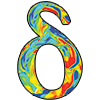SpaceClaim Training Course — Ep 01
Session 6
- Episode
- 01
- Run Time
- 17m 31s
- Published
- Oct 15, 2025
- Topic
- SpaceClaim
- Course Progress
- 0%
1. Overview
In this SpaceClaim training session, you’ll become acquainted with one of the software’s most versatile interface tools: the Move utility. Beyond learning precise geometry selection techniques, you’ll also discover the various options within the Move command for repositioning objects. These options include Move Along Trajectory, Move Direction, Anchor, Move Radially About Axis, Fulcrum, and the Up To feature—each proving highly effective in different design situations. Throughout this lesson, we’ll provide practical examples and hands-on exercises to help you implement these tools efficiently in your own work.
2. Selection Techniques
When utilizing the Move command or any other SpaceClaim tool, making accurate geometry selections is critical. The selected entity may be a surface, point, edge, or body, and choosing appropriately ensures proper command execution.
In this session, you’ll learn two effective selection methods including Box Selection and Component Selection, which become accessible once the Move command is initiated. These approaches will help you enhance the precision and efficiency of your geometry selections in SpaceClaim.
3. Move Utility
The Move command in SpaceClaim represents one of the software’s most practical tools. It enables us to relocate selected entities—such as surfaces, points, edges, and components—along the standard X, Y, and Z axes, and also to rotate them around various axes.
Beyond these fundamental functions, the Move command offers several advanced options that make geometry manipulation simpler, more accurate, and highly effective. In the following sections, we’ll examine some of these capabilities and their practical applications within SpaceClaim.
3.1. Directional Movement
The Move Direction command enables us to translate geometry along a designated direction or reference line. For instance, if we sketch a diagonal line and then activate this command, the selected geometry can be moved precisely along that line’s direction. This ensures the movement remains perfectly aligned with the chosen reference.
3.2. Trajectory-Based Movement
Similar to the Move Direction command, the Move Along Trajectory option allows geometry repositioning. However, rather than limiting movement to a straight path, this command enables geometry to follow curved or intricate trajectories.
For example, if a curve is drawn in the design workspace, the selected geometry can be repositioned exactly along that curve using this command. This capability proves especially valuable when working with sophisticated models requiring precise positioning along non-linear paths.
3.3. Anchor Point
The Anchor option enables us to reposition the Move Handle. By default, when employing the Move command, the handle appears at the selected geometry’s center.
However, frequently we need to move geometry relative to another specific location—for instance, from one of its corners, faces, edges, or even a custom-defined point. The Anchor tool facilitates this by allowing us to relocate the move handle to the desired position, enabling more controlled and precise movements.
3.4. Radial Movement About Axis
The Move Radially About Axis option allows repositioning selected geometry by moving it radially around a specified axis or reference line.
More simply, instead of translating geometry along linear directions (X, Y, Z), this tool enables you to pivot or rotate geometry around a selected axis. This feature proves particularly beneficial when arranging components that need positioning around a central axis, such as turbine blades, circular arrays, or rotational assemblies.
3.5. Fulcrum Point
The Fulcrum option within the Move/Rotate tools allows you to specify a pivot point (or rotation center) for rotation operations.
By default, geometry rotates about its center or the selected axis. However, often you may need rotation to occur about a custom point. With the Fulcrum tool, you can relocate the pivot to any desired location on the model, providing precise control over rotational movement.
This feature proves especially useful when simulating mechanical systems such as hinged doors, levers, or articulated arms that need to rotate around a specific pivot point.
3.6. Up To Feature
The Move Up To option enables you to translate selected geometry until it reaches a chosen reference, such as a face, surface, plane, or edge. Rather than specifying a numerical distance, you simply select the target reference, and the geometry moves until it precisely aligns with or contacts the reference. This capability proves particularly valuable when positioning parts or surfaces accurately relative to existing geometry, eliminating the need for manual distance calculations.
4. Session Summary
This session’s objective was to help you develop a comprehensive understanding of the Move tool, one of the most practical and adaptable features in 3D modeling. This tool significantly streamlines the design workflow, particularly when handling complex geometries.
As demonstrated, when developing a 3D model, you may need to reposition specific components or duplicate intricate shapes. In such scenarios, proficiency with the Move tool becomes extremely valuable.

